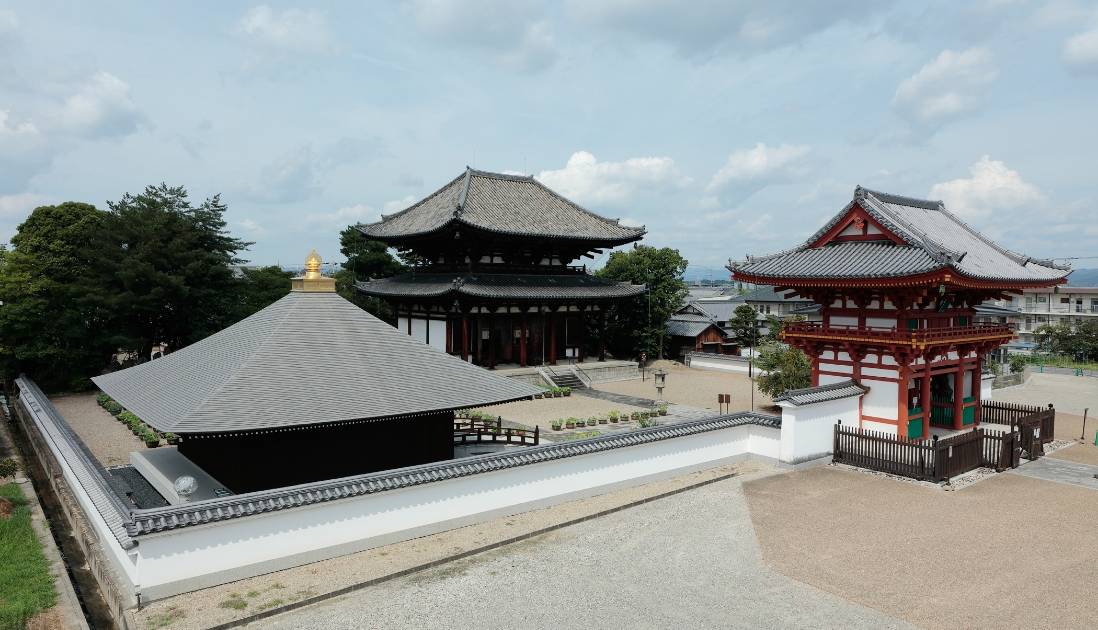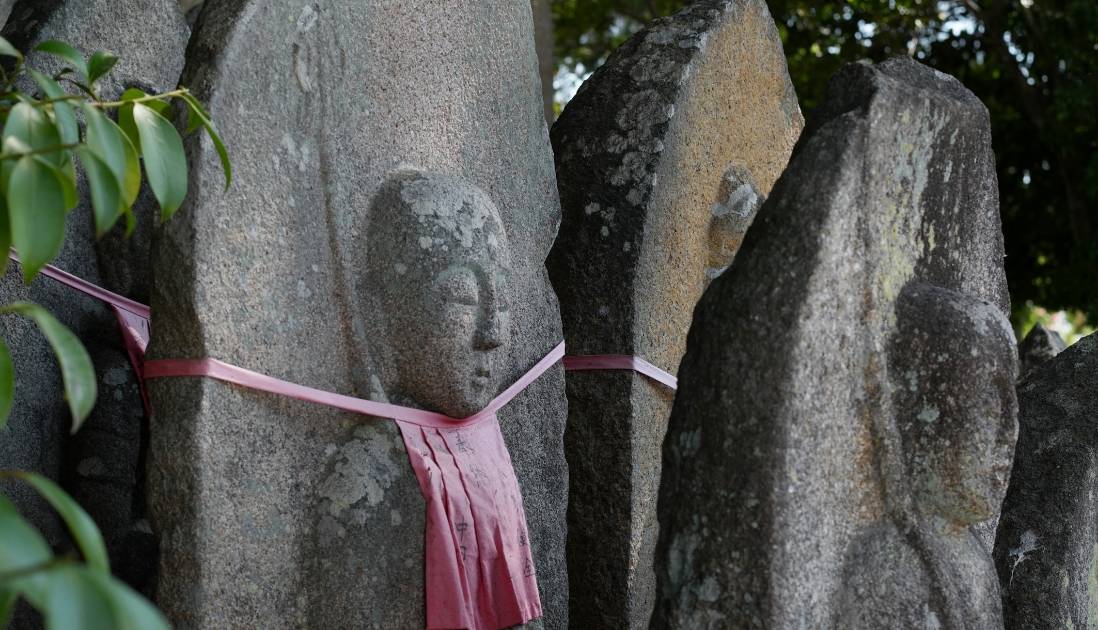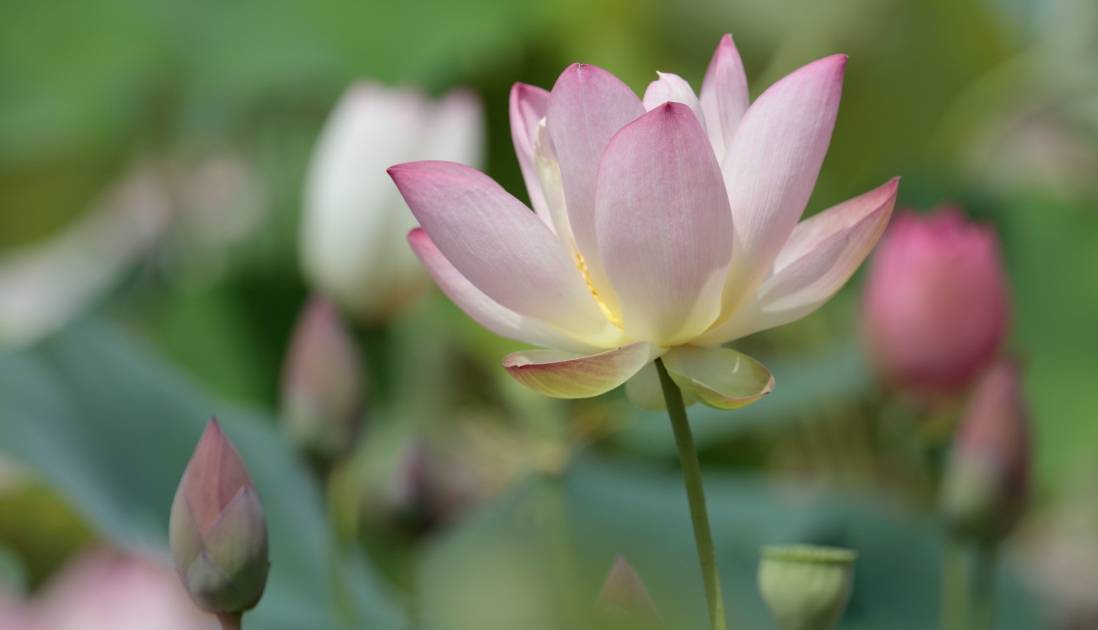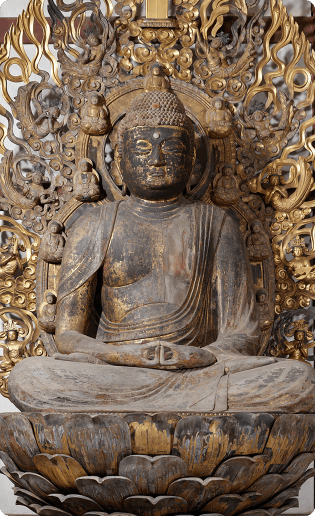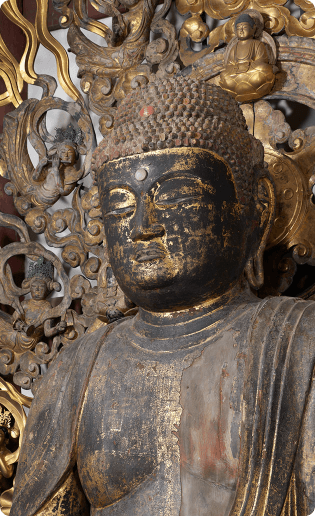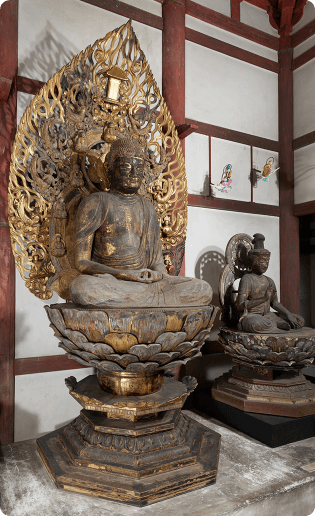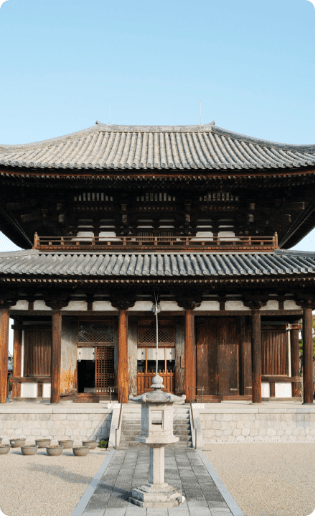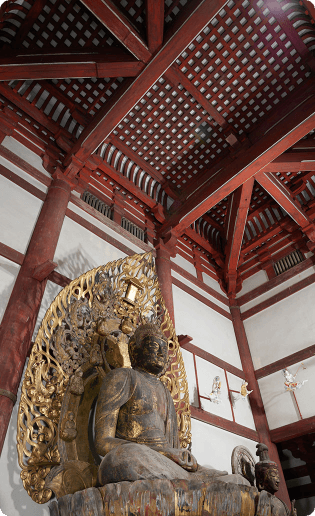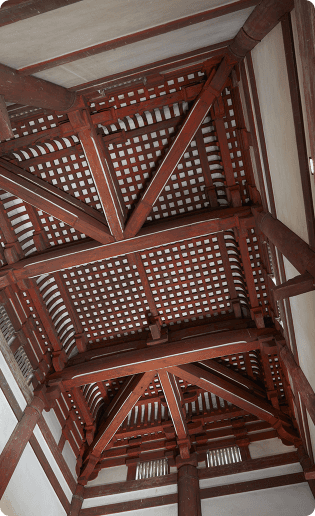Kikōji
喜光寺
大き海の 水底深く 思ひつつ 裳引きならしし 菅原の里
Kikōji Temple was founded over 1,300 years ago, but it is still a living Buddhist institution with an active lay community. The temple was established in 721 by Gyōki (668–749), a Buddhist priest known for his philanthropic work and his role in building the Great Buddha at Tōdaiji Temple. Today, Kikōji is known for its garden of lotus flowers and as a center for shakyō, the copying of sutras by hand.
Kikōji Temple was established as Gyōki’s center of operations in Nara. Gyōki traveled broadly, preaching Buddhism, founding temples, and organizing the creation of public works. At that time, priests were prohibited from working outside their monastic compounds, and the state-sponsored Buddhist institution saw Gyōki as a criminal. However, Gyōki’s renown could not be ignored, and in time, he and his followers received official recognition from Emperor Shōmu (701–756). In 748, the emperor visited Gyōki at Kikōji Temple (then called “Sugawara-dera”), where he supposedly saw a mysterious light emanating from the temple’s centermost statue. Awestruck, he renamed the temple “Kikōji,” or “temple of joyous light.”
In 749, Gyōki passed away at Kikōji at the age of 82, and the centuries following his death brought many challenges for the temple. Kikōji’s main hall burned down during the tumultuous Sengoku period (1467–1568), a century marked by civil war and widespread upheaval. The hall was rebuilt in 1544, but many other temple buildings were destroyed by a second upheaval in the 1570s. The next misfortune came in 1868, when the temple lost its governmental support and came close to ruin. The temple complex was all but abandoned, and its buildings were left to fall into disrepair. Kikōji would have been shut down completely if not for the efforts of a nearby temple and of local residents, who petitioned the government to stop its closure.
Having survived to the twentieth century, the temple’s main hall and Amida statue were designated Important Cultural Properties in 1901 and 1921, respectively. Subsequent repairs helped to breathe new life into the dilapidated temple, and in 1990, a widespread revitalization was initiated by a newly appointed chief priest named Yamada Hōin (b. 1940). The southern gate was rebuilt in 2010 thanks to donors from around the country. In 2014, a hall honoring Gyōki was erected, and in 2021, the temple opened a columbarium where temple supporters can have their loved ones memorialized for generations to come.
More than 250 potted lotus plants sit in rows beyond the temple’s Nandaimon Gate. Many visitors come to see the lotuses when they bloom each year between mid-June and early August. Sutra copying sessions and lectures are held on the second day of every month, and a commemoration of Gyōki’s death takes place annually on March 2.
One of Kikōji’s major activities is its promotion of sutra-copying, or shakyō. The temple’s administrative building has a large shakyō dojo where participants can practice copying a simplified version of the Nirvana Sutra. This form of shakyō is especially suited to beginners, including those who are unfamiliar with Japanese.
National Treasures and Important Cultural Properties
Hign
Within the Temple Precincts
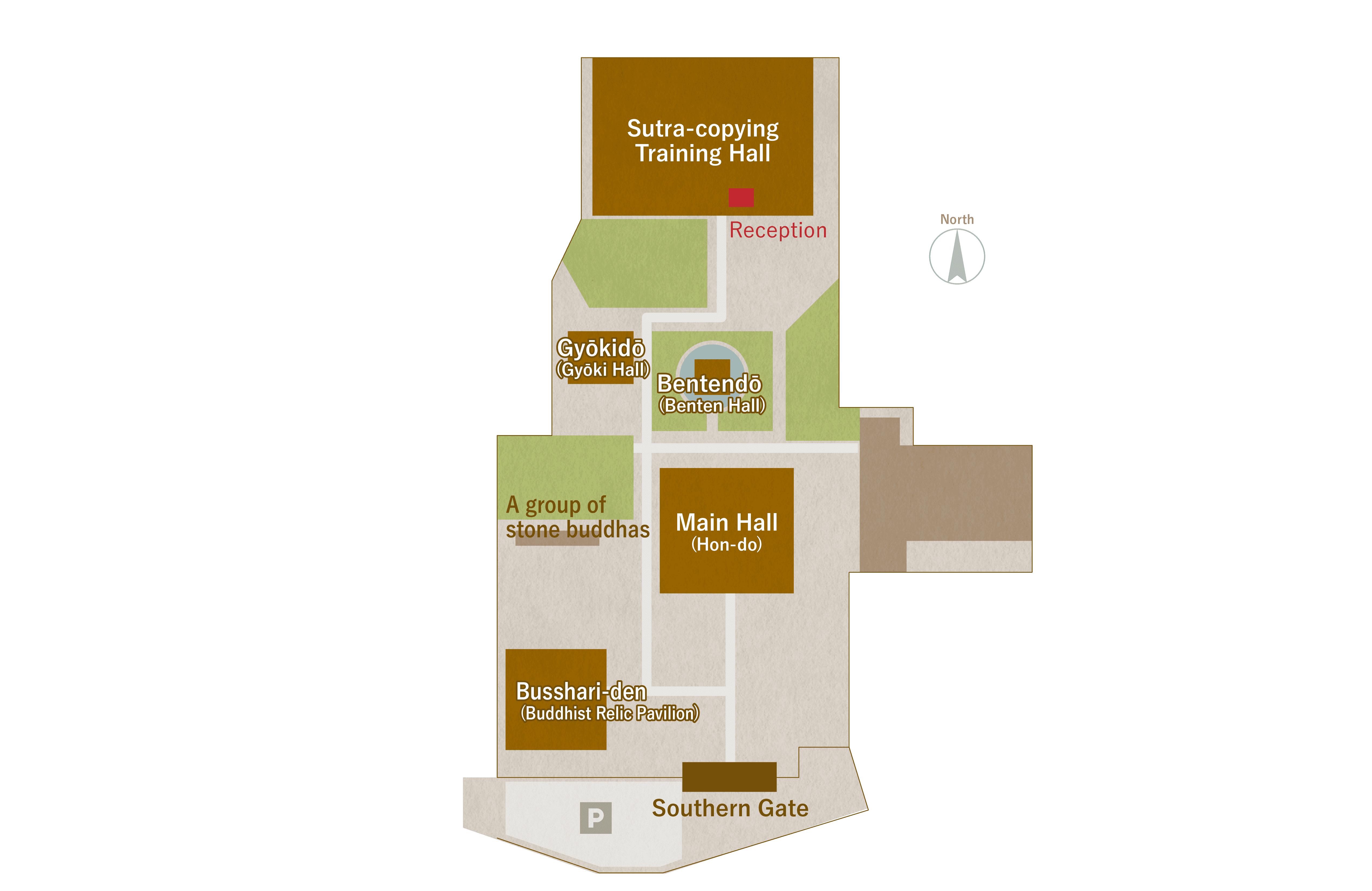
Southern Gate (Nandaimon)
Like the main hall, the temple’s original southern gate was destroyed in the 1570s. The gate was finally reconstructed in 2010 with funds raised through the temple’s promotion of sutra-copying (shakyō). The bays on either side of the 12-meter gate are occupied by statues of two Niō guardians created by celebrated sculptor Nakamura Shinya (b. 1926). They are thought to purify the hearts of those who pass through the gate.
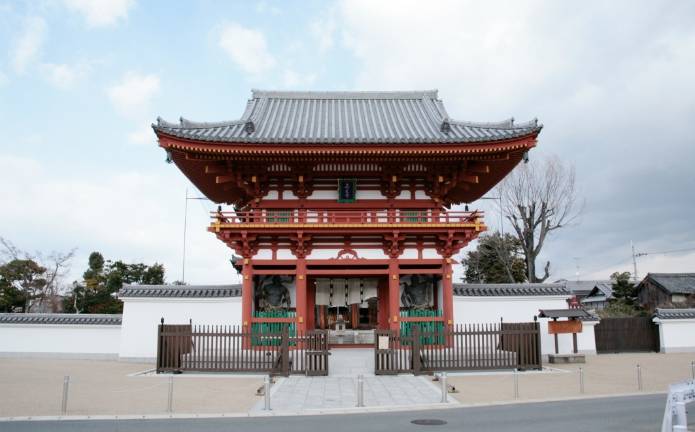
Keywords to Help Understanding of the Temple
Keywords
The Experimantal Great Buddha Hall
It is said that the main hall became known as the 'Experimental Great Buddha Hall' after the legend spread that it was modeled after the Great Buddha Hall of Tōdaiji. The building's impressive appearance, with its large, extending eaves, is striking. When the setting sun shines through the latticed windows at the four corners of the building, it creates a scene reminiscent of the Pure Land, where one can encounter the image of Amida.
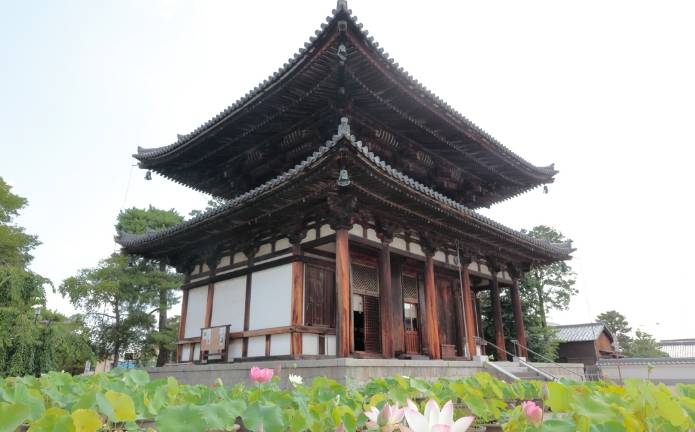
Basic Information
Kikōji
- Official Website
- https://kikouji.com/
- Hours
- 9:00 - 16:00 (Last Admission, 15:45)
- Entrance fee
- Adults: 500 yen; elementary school and junior high-school stiudents, 300 yen
- Access
- About a 10-minute walk from Kintetsu Nigatsuji Station.
- Tel
- 0742-45-4630
Other temples in the Saki district
Temple
Saidaiji
この里は 継ぎて霜や置く 夏の野に

Hokkeji
朝霧の たなびく田居に 鳴く雁を
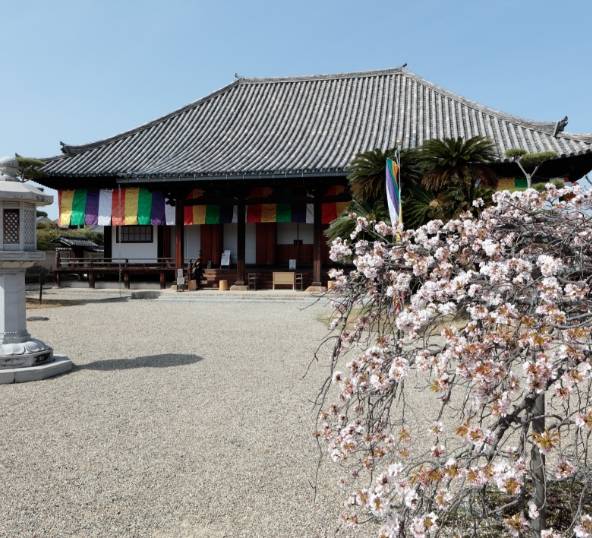
Kairyuoji
海若の いづれの神を 祈らばか
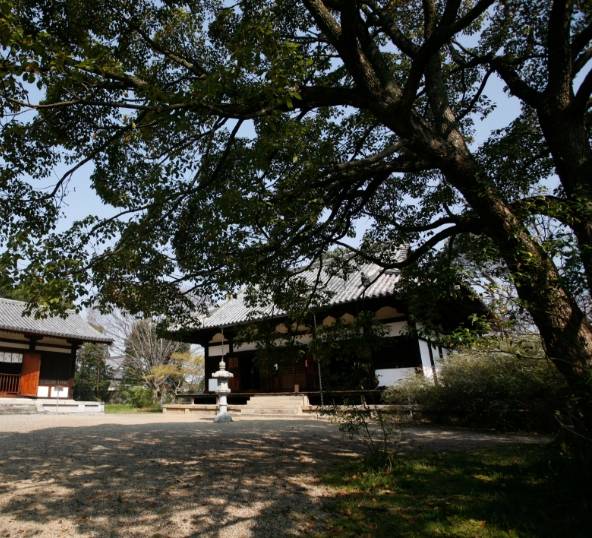
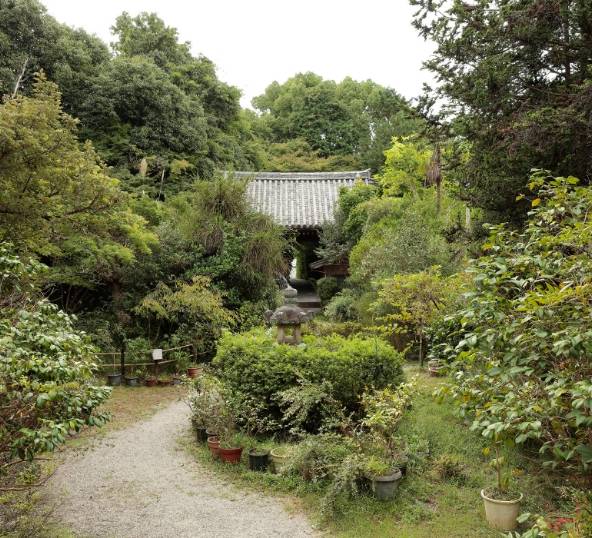
Futaiji
阿保山の 桜の花は 今日もかも
The original text and modern translation of the Man'yōshū on this site are quoted from Kodansha Bunko's Man'yōshū Complete Translation with Notes and Original Text (by Susumu Nakanishi).
